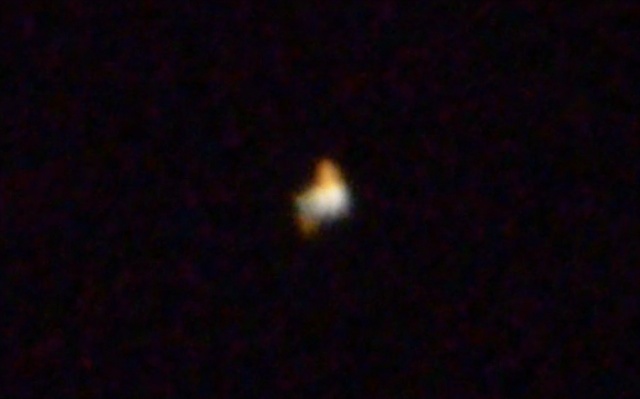
 |
ISS, Saturn, MoonLast updated: 15 June 2011 |
|
| Follow @mweasner | Welcome | Photos | Videos | Equipment | Links | Data |
Before getting into last night's session, some Site notes. The Equipment page has been redone and I have added a link to my Astronomical Videos page in the menu (above). Also, a new Cassiopeia Observatory RSS feed has been set up. You can subscribe to it via the Welcome page or click this link. I will continue to announce new Reports on Twitter and through my Home Page (http://www.weasner.com) RSS feed.
Monday, 13 June, dawned clear and as usual, the wind began blowing again. I did not open the observatory due to an early Tuesday morning commitment. Tuesday, 14 June, was clear and generally calm. The observatory was opened at 1807 MST, 108°F. At 1814 MST, viewed Saturn in the 26mm eyepiece. I updated the ISS TLE for tonight's two passes. Switched to the 15mm eyepiece to view Saturn at 1839 MST. At 1900 MST, I began setting up to video record the first of tonight's passes of the International Space Station. Mounted the D7000 DSLR at prime focus + 2X Barlow Lens, focused on Saturn and locked the telescope focus. I then did a test HD video recording on Saturn. At 1924 MST, I began the ISS tracking set up and waiting for the pass to start. It would be difficult to see the ISS against the still bright sky as the sun would set only a few minutes before the pass was to start. At 1939 MST, the ISS pass began but I did not visually pick up the station until more than halfway through the pass. I began playing "catchup" with the ISS and finally caught up just as the station was disappearing. The image below is the best single frame from the video, cropped. You can just make out the solar panels in the trailed image.

At 1948 MST, I returned to Saturn. I did some HD video recording. Here is the best frame from a video, cropped to the same size as the ISS image for comparison:

I then removed the camera and did some Saturn viewing with the 15mm eyepiece. Three moons were visible: Titan, Rhea, and Iapetus. I then slewed the telescope to the moon, which was just rising out a tree. I mounted the D7000 DSLR at prime focus + focal reducer + visual and took this image of the nearly full moon, 1/500sec, ISO 100:

This next image is of a small portion of what little terminator there was, prime focus + visual back + 3X TeleXtender, 1/250sec, ISO 500:

I then began getting ready for the next ISS pass. Mounted the camera at prime focus + star diagonal + 3X TeleXtender. Focused using the moon and did a test video. I then began waiting for the pass to begin. This was a good pass for tracking. I was able to keep the ISS in the camera FOV for much of the 6 minute pass. However, the ISS was very low in the sky and so the images suffer from atmospheric distortion. Here are three frames from the video, cropped to the same scale as the first ISS and Saturn images above, showing the changing perspective at different times in the pass.



I have posted a short video clip (14 seconds) showing what tracking the ISS in a telescope is like.
Closed the observatory at 2145 MST, 75°F. During the night, I terminated ten Kissing Bugs that had come inside the observatory. I will be doing some more spraying soon.
Go to the previous report.
Return to the Cassiopeia Observatory Welcome Page.